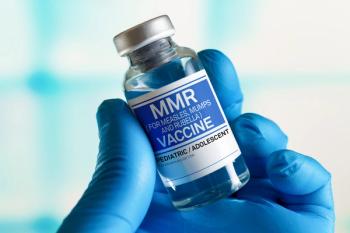
21-Valent Pneumococcal Conjugate Vaccine Exhibits Consistent Safety and Immunogenicity Across Manufacturing Lots
Key Takeaways
- V116 shows consistent immunogenicity and safety across manufacturing lots, ensuring reliable protection against pneumonia and invasive pneumococcal disease.
- The vaccine's efficacy is superior to the 23-valent pneumococcal polysaccharide vaccine for serotypes unique to V116.
Across 3 different manufacturing lots, V116 (21-valent pneumococcal conjugate vaccine) demonstrated consistent immunogenicity and efficacy against S pneumoniae, which causes pneumococcal diseases.
V116, a 21-valent, adult-specific pneumococcal conjugate vaccine (PCV21; Merck) indicated for protection against pneumonia and invasive pneumococcal disease (IPD), was found to exhibit consistent immunogenicity and safety profiles across 3 different manufacturing lots, according to investigators of a study published in Med.1
Importance of Vaccine Lot Consistency
Ensuring that vaccine efficacy, potency, and safety are consistent across manufacturing lots is critical. Vaccine production is a complex process that can occur over multiple sites and involve numerous stakeholders, with myriad opportunities for mistakes that could impact the health of patients. Investigators say that even subtle changes in the production process can alter the purity, efficacy, or safety of a vaccine lot. These risks are compounded with ever-present barriers in procuring necessary supplies for vaccines and navigating shortages.2
“This compounded risk of biological and physical variability makes vaccine manufacturing more challenging than typical small molecule pharmaceuticals and is a primary root cause of the high proportion of vaccine manufacturing failures and supply shortages,” the authors of a review of the vaccine manufacturing process published in Vaccine wrote.2
Vaccines to protect against Streptococcus pneumoniae (S. pneumoniae) infection, which can lead to community-acquired pneumonia and IPD, have been increasingly manufactured and proliferated across the globe. These conditions lead to significant morbidity and mortality, especially among older adults and those with risk factors that would cause severe disease. Several vaccines targeting S pneumoniae have been developed, most prominently PCVs, which target multiple pneumococcal-causing serotypes that circulate in the community.1,3
V116 (PCV21) was approved by the FDA in 2024 for the prevention of invasive disease and pneumonia caused by S pneumoniae for patients aged 18 years and older. According to a series of clinical trial data from the STRIDE family of trials, V116 was found to elicit higher immune responses than a comparator vaccine for serotypes unique to V116. Furthermore, the Advisory Committee on Immunization Practices (ACIP) has recommended that adults 65 years and older who had not previously received a pneumococcal vaccine and those 16 to 64 years with known risk factors receive PCV21.3,4
V116 is Similarly Efficacious Across Vaccine Lots
Although the efficacy of V116 has been proven, the lot consistency of V116—how similar the potency and efficacy of the vaccine is across manufacturing lots—has yet to be determined. These insights could serve as critical indications of the strength of V116’s manufacturing process and identify areas where refinements to the process are necessary. Therefore, investigators of a global phase 3 trial (STRIDE-4; NCT05464420) sought to evaluate the manufacturing consistency of V116.1
Participants were randomly assigned to receive a single dose of V116 from 1 of 3 lots or the 23-valent pneumococcal polysaccharide vaccine (PPSV23). Thirty days post-vaccination, investigators associated geometric mean titers (GMTs) and immunoglobulin G (IgG) geometric mean concentrations (GMCs) for patients. In addition, systemic and injection-site adverse events (AEs) were examined for 5 days postvaccination, according to the investigators.1
Results from the analysis indicate that all 3 lots of V116 met equivalence criteria based on GMTs for all 21 serotypes included in the vaccine. GMTs and GMCs were found to be comparable between the combined V116 lots and PPSV23 for shared serotypes and were higher in the combined V116 lots for serotypes unique to V116, reaffirming the superior efficacy of V116 versus PPSV23. Importantly, the AE profiles were similar across the 3 V116 lots, and between the combined V116 lots and PPSV23, the study authors found.1
Ultimately, these results both reinforce the strong protection provided against S pneumoniae from V116 and solidify the consistent safety and efficacy across vaccine lots of V116. Recipients of V116 can be assured that there are no significant differences between their vaccine and another, with the same protection provided regardless of lot. Pharmacists can discuss a typical vaccine manufacturing process with their patients to address any lingering concerns regarding safety and efficacy.1
REFERENCES
1. Scott P, Ukkonen B, Caraco Y, et al. A phase 3, randomized trial to evaluate lot-to-lot consistency of V116, an adult-specific pneumococcal conjugate vaccine (STRIDE-4). Med. 2025;100748. doi:10.1016/j.medj.2025.100748
2. Plotkin S, Robinson JM, Cunningham G, Iqbal R, Larsen S. The complexity and cost of vaccine manufacturing—An overview. Vaccine. 2017;35(33):4064-4071.
3. Halpern L. Pneumococcal 21-valent conjugate vaccine generates positive response in adults at increased risk of disease. Pharmacy Times. Published October 21, 2024. Accessed June 30, 2025. https://www.pharmacytimes.com/view/pneumococcal-21-valent-conjugate-vaccine-generates-positive-response-in-adults-at-increased-risk-of-disease
4. Gallagher A. FDA approves V116 for prevention of invasive pneumococcal disease and pneumonia. Pharmacy Times. Published June 18, 2024. Accessed June 30, 2025. https://www.pharmacytimes.com/view/fda-approves-v116-for-prevention-of-invasive-pneumococcal-disease-and-pneumonia
Newsletter
Stay informed on drug updates, treatment guidelines, and pharmacy practice trends—subscribe to Pharmacy Times for weekly clinical insights.














































































































































































































